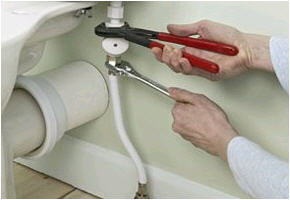Maintaining Your Toilet Seat Bidet
April 5, 2009 by blogwriter
Filed under Bidet Articles
 Just like most plumbing fixtures in your house, you can fix up majority of small problems on your own. As such, you should keep a basic set of tools put away, in the event that you encounter a few problems like leaks and low water pressure.
Just like most plumbing fixtures in your house, you can fix up majority of small problems on your own. As such, you should keep a basic set of tools put away, in the event that you encounter a few problems like leaks and low water pressure.
What equipment should you keep on your bidet repair tool box?
- Plumber’s Wrench (for tightening and loosening joints, pipes and hoses)
- Pliers
- Screwdriver (in case you need to remove and return the toilet seat)
- Plumber’s tape (good for taping leaks in the hose too)
In case there’s a problem that you can’t figure out on first glance, try disassembling your bidet and putting it back again. Since most toilet seat bidets are intended for DIY installation, they shouldn’t be too difficult to put together. As with all other plumbing work, of course, make sure to turn off your power supply before doing anything. The last thing you want is to aggravate the problem with a flooded toilet.
Electronics
Most manuals that come with electronic bidets also include basic repair and upkeep instructions for non-plumbing components, so make sure to give it a read in case you encounter problems you’re having a hard time troubleshooting. For the most part, though, the electronic components of premium bidets are built to last and are covered by the warranty, so problems shouldn’t occur all that often.
Eco-Friendly Bidet Use
April 2, 2009 by blogwriter
Filed under Bidet Articles
 Much has been made of the bidet’s environmentally-friendly aspects. Allowing households to function day-to-day without relying on wasteful toilet paper, it’s one of the smartest fixtures homeowners can ever install. Of course, ensuring that your bidet leaves as little environmental footprint as possible can best be achieved by using it more consciously.
Much has been made of the bidet’s environmentally-friendly aspects. Allowing households to function day-to-day without relying on wasteful toilet paper, it’s one of the smartest fixtures homeowners can ever install. Of course, ensuring that your bidet leaves as little environmental footprint as possible can best be achieved by using it more consciously.
1. Water pressure
Use light water pressure if that’s all you need. If you just have to wash off the area, instead of needing to remove dirt, a soft gush of water should water. That simple behavior adjustment can mean gallons upon gallons of water saved throughout the year.
2. Electricity
Between warm water, heated seats, warm air, the remote control, electronic sensors and a host of other special features, premium bidets can use up quite a bit of electricity. As such, it’s prudent to do your part in trying to conserve it, should that be an option.
Whenever you can, use regular water instead warm, turn off heating on the seats if the weather’s not too cold and shut off the sensors and automatic controls if they’re not necessary. Unless you have seniors or disabled parties living at home, much of the automated functionalities in electronic bidets aren’t all that essential. Use only what you need.
3. Working condition
Perform regular tune-up to make sure your bidet is in tip-top condition. If you notice leaks between connecting pipes, always attend to it immediately, to avoid wasting water. Make sure to keep the facility clean to avoid damaging it.


